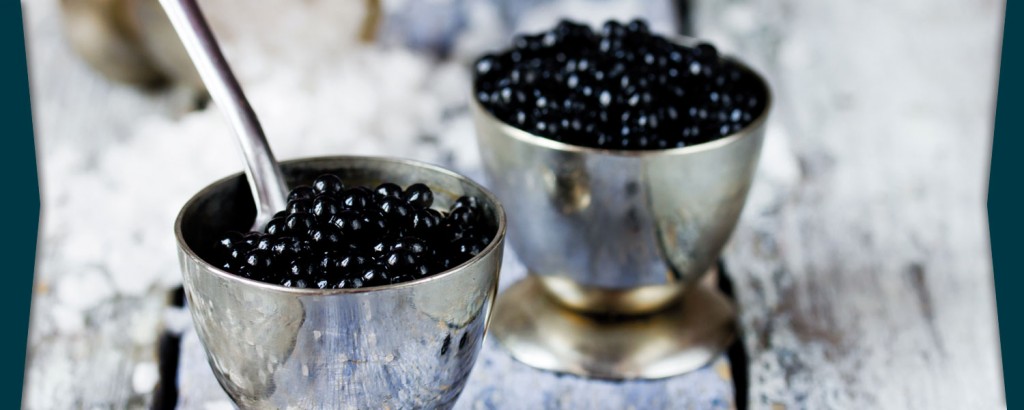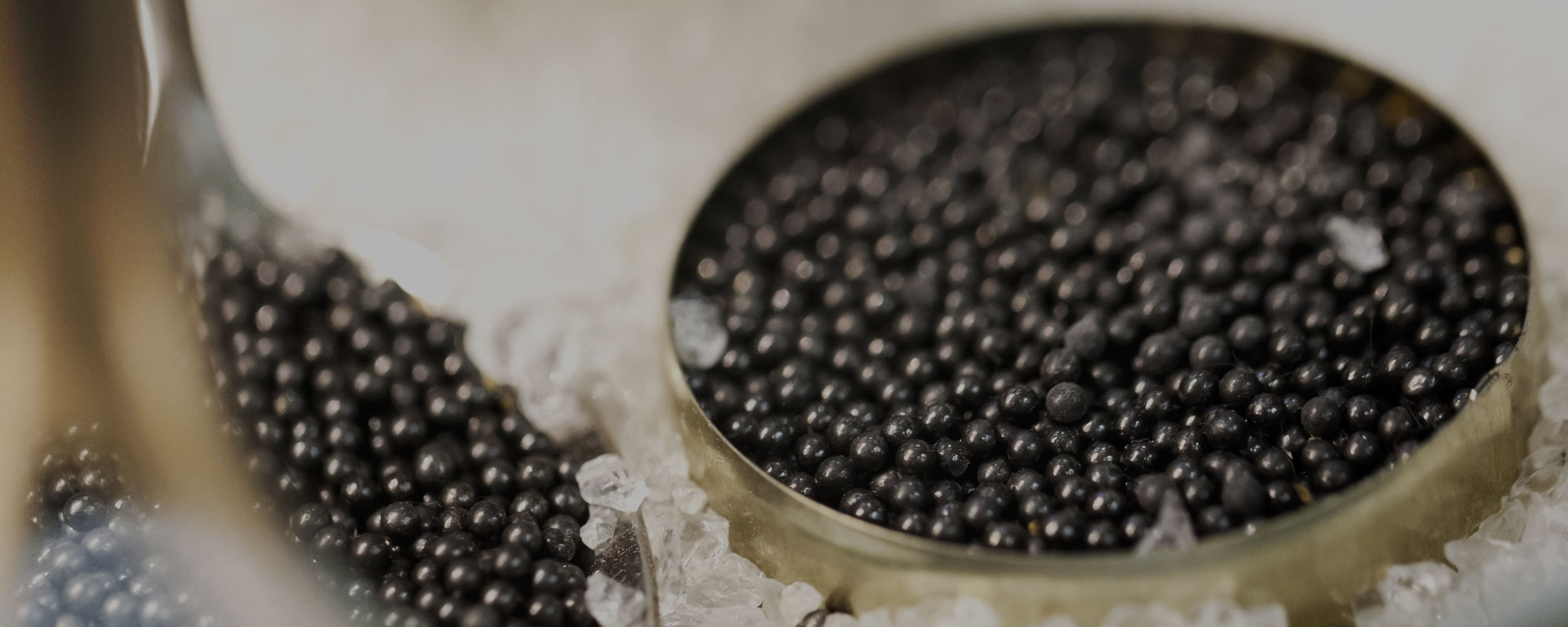Menu
Provisioning
Caviar

FROM STURGEON TO CAVIAR
The sturgeon is one of the world’s oldest fish: it can be traced back to more than 30 million years ago; a sort of living fossil fish…
It is true that beneath the clear water of the tanks, the black and silent shadows of this fish that is almost reptilian in its movement bring to mind a prehistoric and legendary era.
From head to tail, a line of white dots makes it possible to follow their slow and grave movements when they swim deep down into the water to find their food. When the sturgeons’ eggs reach maturity, it is not rare for females to weigh 8 to 10 kilos.
A LONG STORY
Such a long story can only give rise to the finest of legends.
The oldest sea-faring populations, Egyptians and Phoenicians, already in their era had developed a taste for the flesh of sturgeons, which they conserved in salt in order to be able to eat it throughout their long journeys. In the 7th century BC, coins struck in the port of Carthage bore the effigy of this famous fish. According to Aristotle, it boasted many medicinal virtues as well as other properties…
The Romans feted the rarity and quality of the sturgeon: it was served at the biggest banquets on richly decorated dishes and its arrival was accompanied by trumpet fanfares. Cicero railed against its already unreasonable price…
In Constantinople, sturgeon was still a luxury dish, but thereafter, testimonies fade away.
THE MYTH OF CAVIAR
The legend of the sturgeon went on to give rise to the myth of caviar.
What contrast between the heavy black silhouettes of these fish with their ferocious gaze and the preciousness of their eggs.
The metamorphosis is so radical that the sturgeon loses its name, superseded by the proper noun given to its eggs: caviar.
Merely observing the extraction of the eggs is sufficient to be spellbound by this alchemy.
Extremely meticulous care is taken to gather the precious grains, to select them depending on their size and colour, to wash them both quickly and thoroughly in pure water, as well as to obtain the maximum purity without damaging them or letting them escape through the sieve.
Then comes the salting and packaging. All these operations are part of a rapid sequence: a watchful eye, manual skill and experience are of essential importance at this moment.




